“Good Cause” to Deregulate, by Eli Nachmany
Deregulation season is in full bloom at the White House. In a recent memorandum, President Donald Trump directed agencies to employ the Administrative Procedure Act’s “good cause” exception to accelerate repeals of unlawful agency rules. After years of regulatory overreach, President Trump’s bold action will help ensure that the executive branch gets back within the boundaries set by Congress quickly. The alternative would be contrary to the public interest.
The President has taken several important deregulatory actions within the last month. These include the memorandum instructing agencies to repeal unlawful regulations and an executive order requiring agencies to “sunset” certain regulations governing energy production. Additionally, in a separate executive order involving showerhead water pressure, the President took an innovative step: When he directed the Secretary of Energy to rescind the agency’s interpretation of the term “showerhead,” the President determined that ordinary notice-and-comment procedure was unnecessary because he was himself ordering the repeal.
President Trump’s moves are consistent with his longstanding support for curbing regulatory overreach. As he did in his first term in office, the President is walking the walk on deregulation by carrying out his constitutional obligation to “take Care that the Laws be faithfully executed.” Over the last several decades, federal agencies have issued a tidal wave of rules based on their increasingly expansive views of their regulatory authorities. But for a regulation to be valid, it must be within the ambit of a law passed by Congress. Recent Supreme Court decisions—like Loper Bright Enterprises v. Raimondo, West Virginia v. EPA, and Sackett v. EPA—underscore that many regulations have strayed from the limits that Congress has imposed.
The Administrative Procedure Act usually requires agencies to give public notice and allow interested parties to file comments whenever the agency wants to issue a new rule (including a repeal of a rule). But this requirement is inapplicable when the agency, “for good cause,” determines that notice and comment is “impracticable, unnecessary, or contrary to the public interest.” As President Trump points out in his memorandum directing the repeal of unlawful regulations, “[r]etaining and enforcing facially unlawful regulations is clearly contrary to the public interest.” That is particularly so, the memorandum explains, “where repeal is required as a matter of law to ensure consistency with a ruling of the United States Supreme Court.”
Recent developments at the Supreme Court suggest that the President’s fast-track campaign may succeed. In particular, the Court in Loper Bright put the executive branch on notice that courts would no longer defer to agencies’ regulatory interpretations of ambiguous statutes. Instead, a court will adopt the best interpretation of the statute when evaluating whether a regulation is lawful. The Supreme Court’s decision ended the practice of Chevron deference. But many regulations explicitly or implicitly rely on the old Chevron standard to advance expansive (and incorrect) interpretations of federal law—based on the expectation that a court would apply Chevron’s lax standard of review if the regulation were challenged.
The landmark decision in Loper Bright makes many of these regulations vulnerable in court. Moreover, the existence of these regulations puts the President in a difficult position. Regulations are binding, but enforcing unlawful regulations undermines the President’s constitutional duty to ensure faithful execution of the laws that Congress passes. That solemn constitutional obligation should equip the President with “good cause”—consistent with the Administrative Procedure Act—to direct the quick repeal of these regulations on the grounds of unlawfulness.
This immediate deregulation is likely to face challenges in the courts, but the President has a strong argument that enforcement of unlawful regulations goes against the public interest. As the Supreme Court has put it in the context of evaluating whether to grant a stay, “our system does not permit agencies to act unlawfully even in pursuit of desirable ends.” The D.C. Circuit stated the proposition more bluntly in the context of a requested preliminary injunction: “There is generally no public interest in the perpetuation of unlawful agency action.” Indeed, on the other side of the ledger, the Sixth Circuit has recognized (in the preliminary injunction context) a great “public interest in having governmental agencies abide by the federal laws that govern their existence and operations.” The President’s memorandum takes these statements seriously.
Cary Coglianese and Daniel Walters recently published an interesting Notice & Comment post about the President’s memorandum, suggesting that the move shows “just how unsettled, and how unpredictable, the administrative governance game can be in a post-Loper Bright world.” The authors ask: “Did Loper Bright Also Overturn Notice-and-Comment Rulemaking Procedure?” But this is not the right question. The APA’s “good cause” exception established the authority to bypass notice and comment before Loper Bright came down. The question, then as now, is whether delay would contravene the public interest. Loper Bright and the other cited cases merely help with the process of identifying the regulations that qualify for immediate repeal.
Following the law is any federal agency’s first priority. Indeed, in the words of the Supreme Court, “an agency literally has no power to act … unless and until Congress confers power upon it.” Even if a regulation leads to a policy outcome that some might like, that regulation cannot stand if it is inconsistent with either a law that Congress has passed or binding Supreme Court precedent.
The President’s memorandum directing the repeal of unlawful regulations is a win for the rule of law. President Trump has an opportunity to achieve generational victories in the deregulation space, and his efforts merit support. Over the last several years, the Supreme Court has laid the groundwork for the executive branch to restructure administrative law in a fundamental way. Now, President Trump is building.
Eli Nachmany is an attorney in Washington, D.C., where he practices regulatory litigation.



